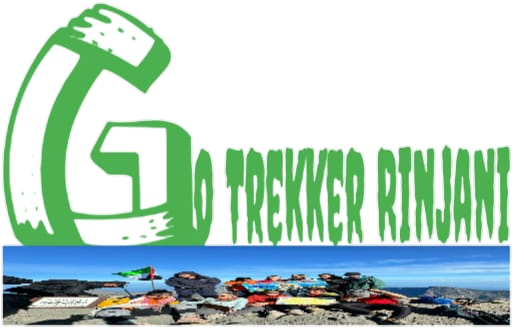
IS IT SAFE TO CLIMB MOUNT RINJANI?
Yes. Rinjani has a moderate and easily recognized track. Apart from “Act of God” incidents, as long as you listen to your mountain guide’s instructions and stay on the track, there is less risk of suffering any injury or accident. There are reported incidents where climbers lost their way, injured themselves or lost their lives on the mountain, but note that these usually happen when they leave the marked trail on their own and/or get deviated from their group.
HOW DIFFICULT IS TO TREK RINJANI?
For the majority of people, climbing rinjani is a very challenging experience. But anyone with a reasonable fitness level can manage to reach the crater rim, or even the summit. Porters are carrying all food and camping equipment, which makes it much easier for you to actually complete the trek.
The majority of the route represents a normal trekking path, although there is a harder portion in the last 1 hour just before reaching the summit. No rock climbing or technical climbing skills are needed.
The climb to the summit, is optional however. You can choose a package that doesn’t go to the summit, like the 2 days 1 night package. Or, you can choose a package that includes the summit climb (3 days 2 nights and 2 days 1 night), and decide at the end of the first day if you want to do it on the second day. If you feel that the first day was hard on your body and decide to skip the second day summit climb, you can always decide to do so.
IS THERE ANY HEALTH RESTRICTION?
It is highly recommended that all hikers should have themselves medically checked before attempting any mountain climb. If you are pregnant or have a history of suffering from the following ailments, it is highly recommended that you should refrain from climbing: Hypertension, Diabetes, Palpitation, Arthritis, Heart Disease, Severe Anemia, Peptic Ulcers, Epileptic Fits, Obesity (Overweight), Chronic Asthma, Muscular Cramps, Hepatitis (Jaundice); or any other disease which may hamper the climber. You know your body best!
WHEN IS RINJANI OPEN FOR MOUNTAINEERING ACTIVITIES?
Rinjani is normally open for trekking and camping activities from 1st of April to 6th of January yearly. Moreover, the park will be closed for any of the activities from the 2nd week of January to the end of March (3 months) regarding to heavy rain which might en-dangerous lives.
WHEN IS IT CONSIDERED AS THE BEST TIME TO CLIMB MOUNT RINJANI?
April to June is considered the best time to climb because of the beginning of hiking season as well as the end of rainy-season. It means the green landscapes can still be seen and lower amount of hikers found during these periods. The very high trekking season is from the early of July and to the late August; the track will be hectic during these two months. Then September to the first week of January are also a good time to do hiking.
IS THERE ANY AGE LIMIT TO CLIMB MOUNT RINJANI?
We suggest young children to be at least 10 year old due to the numerous steps and steep slopes. Similarly, elderly climbers need to be in good health and fitness level to attempt the climb.
WHAT KIND OF ALTITUDE SICKNESS HIKERS FREQUENTLY EXPERIENCE ON RINJANI?
Altitude sickness or Acute Mountain Syndrome (AMS) affects every individual differently and is regardless of fitness level. Most climbers will experience lightheaded or a mild headache, while a small percentage of climbers will suffer from nausea or vomiting. The symptoms of AMS vary for different people but include dizziness, fatigue, confusion, difficulty walking. If you are feeling any of these syndromes please take some minutes rest and drink lots of water
- Go Trekker Rinjani Office is a trekking and tour operator based on senaru the Indonesian island of Lombok.
- Email: gotrekkerrinjani@gmail.com
- +6281906226603
- Senaru Lombok
CV. GO TREKKER RINJANI TREKKING TOUR & TRAVEL
Company Name : CV. Go Trekker Rinjani Tour And Travel
License : SK.58/T.39/TU/KSA/3/2020
N P W P : 94.343.543.8-914.000
Director : Mr. Din
Last Post
PayMent Options
Pergasingan Hill Sembalun 2 Days 1Night
Copyright @ Rinjani National Park Lombok*2024

